
The history of ancient Israel and Judah spans from the early appearance of the Israelites in Canaan's hill country during the late second millennium BCE, to the establishment and subsequent downfall of the two Israelite kingdoms in the mid-first millennium BCE. This history unfolds within the Southern Levant during the Iron Age. The earliest documented mention of "Israel" as a people appears on the Merneptah Stele, an ancient Egyptian inscription dating back to around 1208 BCE. Archaeological evidence suggests that ancient Israelite culture evolved from the pre-existing Canaanite civilization. During the Iron Age II period, two Israelite kingdoms emerged, covering much of Canaan: the Kingdom of Israel in the north and the Kingdom of Judah in the south.
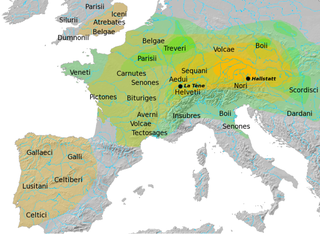
The La Tène culture was a European Iron Age culture. It developed and flourished during the late Iron Age, succeeding the early Iron Age Hallstatt culture without any definite cultural break, under considerable Mediterranean influence from the Greeks in pre-Roman Gaul, the Etruscans, and the Golasecca culture, but whose artistic style nevertheless did not depend on those Mediterranean influences.

The Sarmatians were a large confederation of ancient Iranian equestrian nomadic peoples who dominated the Pontic steppe from about the 3rd century BC to the 4th century AD.

Tel Megiddo is the site of the ancient city of Megiddo, the remains of which form a tell or archaeological mound, situated in northern Israel at the western edge of the Jezreel Valley about 30 kilometres (19 mi) southeast of Haifa near the depopulated Palestinian town of Lajjun and subsequently Kibbutz Megiddo. Megiddo is known for its historical, geographical, and theological importance, especially under its Greek name Armageddon. During the Bronze Age, Megiddo was an important Canaanite city-state. During the Iron Age, it was a royal city in the Kingdom of Israel.
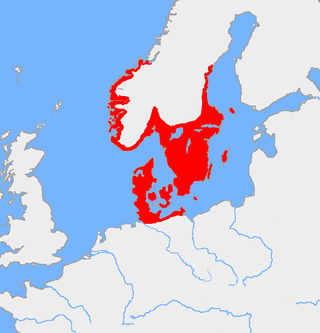
The Nordic Bronze Age is a period of Scandinavian prehistory from c. 2000/1750–500 BC.

The Andronovo culture is a collection of similar local Late Bronze Age cultures that flourished c. 2000–1150 BC, spanning from the southern Urals to the upper Yenisei River in central Siberia and western Xinjiang in the east. In the south, the Andronovo sites reached Tajikistan and Uzbekistan. It is almost universally agreed among scholars that the Andronovo culture was Indo-Iranian. Some researchers have preferred to term it an archaeological complex or archaeological horizon.

The Srubnaya culture, also known as Timber-grave culture, was a Late Bronze Age 1900–1200 BC culture in the eastern part of the Pontic–Caspian steppe. It is a successor of the Yamna culture, the Catacomb culture and the Poltavka culture. It is co-ordinate and probably closely related to the Andronovo culture, its eastern neighbor. Whether the Srubnaya culture originated in the east, west, or was a local development, is disputed among archaeologists.

Poltavka culture was an early to middle Bronze Age archaeological culture which flourished on the Volga-Ural steppe and the forest steppe in 2800—2100 BCE.
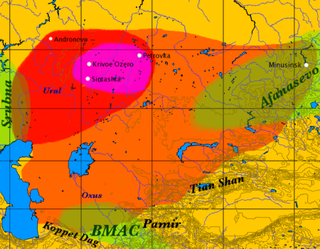
Sintashta is an archaeological site in Chelyabinsk Oblast, Russia. It is the remains of a fortified settlement dating to the Bronze Age, c. 2100–1800 BC, and is the type site of the Sintashta culture. The site has been characterised as a "fortified metallurgical industrial center."

The Gandhara grave culture of present-day Pakistan is known by its "protohistoric graves", which were spread mainly in the middle Swat River valley and named the Swat Protohistoric Graveyards Complex, dated in that region to c. 1200–800 BCE. The Italian Archaeological Mission to Pakistan (MAIP) holds that there are no burials with these features after 800 BCE. More recent studies by Pakistani scholars, such as Muhammad Zahir, consider that these protohistoric graves extended over a much wider geography and continued in existence from the 8th century BCE until the historic period. The core region was in the middle of the Swat River course and expanded to the valleys of Dir, Kunar, Chitral, and Peshawar. Protohistoric graves were present in north, central, and southern Khyber Pakhtunkhwa province as well as in north-western tribal areas, including Gilgit-Baltistan province, Taxila, and Salt Range in Punjab, Pakistan, along with their presence in Indian Kashmir, Ladakh, and Uttarakhand.

The states called Neo-Hittite, Syro-Hittite, or Luwian-Aramean were Luwian and Aramean regional polities of the Iron Age, situated in southeastern parts of modern Turkey and northwestern parts of modern Syria, known in ancient times as lands of Hatti and Aram. They arose following the collapse of the Hittite New Kingdom in the 12th century BCE, and lasted until they were subdued by the Assyrian Empire in the 8th century BCE. They are grouped together by scholars, on the basis of several cultural criteria, that are recognized as similar and mutually shared between both societies, northern (Luwian) and southern (Aramaean). Cultural exchange between those societies is seen as a specific regional phenomenon, particularly in light of significant linguistic distinctions between the two main regional languages, with Luwian belonging to the Anatolian group of Indo-European languages and Aramaic belonging to the Northwest Semitic group of Semitic languages. Several questions related to the regional grouping of Luwian and Aramaean states are viewed differently among scholars, including some views that are critical towards such grouping in general.

The history of Nigeria before 1500 has been divided into its prehistory, Iron Age, and flourishing of its kingdoms and states. Acheulean tool-using archaic humans may have dwelled throughout West Africa since at least between 780,000 BP and 126,000 BP. Middle Stone Age West Africans likely dwelled continuously in West Africa between MIS 4 and MIS 2, and Iho Eleru people persisted at Iho Eleru as late as 13,000 BP. West African hunter-gatherers occupied western Central Africa earlier than 32,000 BP, dwelled throughout coastal West Africa by 12,000 BP, and migrated northward between 12,000 BP and 8000 BP as far as Mali, Burkina Faso, and Mauritania. The Dufuna canoe, a dugout canoe found in northern Nigeria has been dated to around 6556-6388 BCE and 6164-6005 BCE, making it the oldest known boat in Africa and the second oldest worldwide.

Prehistory, also called pre-literary history, is the period of human history between the first known use of stone tools by hominins c. 3.3 million years ago and the beginning of recorded history with the invention of writing systems. The use of symbols, marks, and images appears very early among humans, but the earliest known writing systems appeared c. 5,200 years ago. It took thousands of years for writing systems to be widely adopted, with writing having spread to almost all cultures by the 19th century. The end of prehistory therefore came at different times in different places, and the term is less often used in discussing societies where prehistory ended relatively recently.
Arzhan is a site of early Saka kurgan burials in the Tuva Republic, Russia, some 60 kilometers (40 mi) northwest of Kyzyl. It is on a high plateau traversed by the Uyuk River, a minor tributary of the Yenisei River, in the region of Tuva, 20 km to the southwest of the city of Turan.
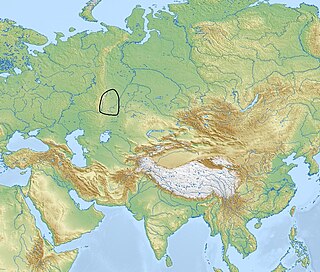
The Sintashta culture is a Middle Bronze Age archaeological culture of the Southern Urals, dated to the period c. 2200–1900 BCE. It is the first phase of the Sintashta–Petrovka complex, c. 2200–1750 BCE. The culture is named after the Sintashta archaeological site, in Chelyabinsk Oblast, Russia, and spreads through Orenburg Oblast, Bashkortostan, and Northern Kazakhstan. Widely regarded as the origin of the Indo-Iranian languages, whose speakers originally referred to themselves as the Aryans, the Sintashta culture is thought to represent an eastward migration of peoples from the Corded Ware culture.

The Eburran industry is the name of an East African tool assemblage that dates from 13,000 BCE and thereafter, found around Lake Nakuru in the Ol Doinyo Eburru volcano complex in the Rift Valley, Kenya.
Archaeology of the United Arab Emirates, the area currently is known as the United Arab Emirates (UAE) was formerly populated by inhabitants of a number of coastal and inland settlements, with human remains pointing to a pattern of transmigration and settlement as far back as 125,000 years. Prehistoric settlement in the UAE spanned the Neolithic, with a number of distinctive eras of ancient settlement including the Stone Age Arabian Bifacial and Ubaid cultures from 5,000 to 3,100 BCE; the Hafit period with its distinctive beehive shaped tombs and Jemdet Nasr pottery, from 3,200 to 2,600 BCE; the Umm Al Nar period from 2,600 to 2,000 BCE; the Wadi Suq culture from 2,000 to 1,300 BCE and the three Iron Ages of the UAE.
The Sauromatian culture was an Iron Age culture of horse nomads in the area of the lower Volga River to the southern Ural Mountain, in southern Russia, dated to the 6th to 4th centuries BCE. Archaeologically, the Sauromatian period itself is sometimes also called the "Blumenfeld period", and is followed by a transitional Late Sauromatian-Early Sarmatian period, also called the "Prokhorov period".

The Filippovka kurgans are Late-Sauromatian to Early-Sarmatian culture kurgans, forming "a transition site between the Sauromation and the Sarmatian epochs", just north of the Caspian Sea in the Orenburg region of Russia, dated to the second half of the 5th century and the 4th century BCE.
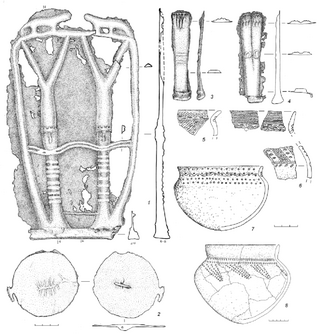
The Itkul culture is one of these Early Saka culture, based in the eastern foothills of the Urals, it is possible that in addition to the Saks, it was inhabited by the Finno-Ugrians. The Itkul culture was part of an East to West mouvement of Asiatic Saka tribes towards the Ural regions during the Iron Age period. Other Saka groups, such as the Tasmola culture circa 600 BCE, were also involved in similar mouvements and settled in the southern Urals.



















